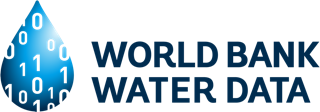Agriculture is a major engine of the Rwandan economy and remains a priority sector in the Government of Rwanda's goals of reducing poverty and achieving food security through commercialized agriculture. Sustainable improvements to agricultural productivity is the only way to achieve this target, calling for investments in participatory land management, water harvesting and intensified irrigation of the hillsides. The Land Husbandry, Water Harvesting and Hillside Irrigation (LWH) project has been working to meet these goals. Evaluating the overall impact of LWH is important to allow Ministry of Agriculture and Animal Resources (MINAGRIs) to effectively plan for its future activities. LWH covers a relatively small area of 30,250 ha, eventually affecting approximately 20 watersheds. From the perspective of MINAGRI, LWH can be seen as a pilot program for comprehensive agricultural overhaul. LWH includes major infrastructure investments such as hillside terracing, irrigation dams, and post-harvest storage. The project aims to operationalize MINAGRIs strategy to encourage mono cropping of cash crops, as opposed to the traditional system of inter-cropping for household consumption. LWH has been rolled out in three phases: implementation in the four Phase 1A sites began in 2010, in the three Phase 1B sites in 2012, and in the Phase 1C sites in late 2013. There have been five surveys for this project including baselines and four follow-ups. There were two sample groups: 1B and 1C. For the 1B sample group, the baseline was conducted in 2012, and follow-up surveys in 2013, 2014, and 2016. For the 1C sample, the baseline was implemented in 2014, and a follow-up in 2016. The data file documented here is from the fourth follow-up survey. The datasets from the baseline, the first, the second, and the third follow-up surveys are also published in the Microdata Library with the following study IDs: 1) The baseline, the first and the second follow-up surveys: RWA_2012-2016_LWHIE-BL-F2_v01_M 2) The third follow-up survey: RWA_2014_LWHIE-F3_v01_M


